Let's start by understanding how we have used energy to change our environments over time.
This will highlight the essential role that energy has played in the development of our civilization.
It will also give us context on the needs that our modern energy systems have to serve.
Units
First, let's establish a few units we can use to quantify our energy needs. For each one, I'll try to give you a conceptual understanding of the measurement and an intuition for what they represent.
Joules
We know that energy can be used to do a variety of useful things, like moving stuff, heating stuff, and lighting stuff.
We want a way to measure energy that reflects the amount of stuff it can do (the amount of change it can cause).
The type of change that's most intuitive for us to visualize is movement. So we can quantify an amount of energy based on the amount of movement it can cause. This quantity is known as work.
Specifically, work is a measure of the total energy required to move a mass by some distance. When an object is moved by an external force, we say that work has been done to move the object. Energy can then be measured by the amount of work it can do.
In physics, the fundamental unit of energy, the joule (J), is indeed a measurement of work.
1 joule is equivalent to the energy it takes to apply a constant force to a 1 kg mass in order to move it 1 meter.
For a sense of scale, lifting an apple by 1 meter off the ground takes ~1 J. In contrast, a lightbulb consumes ~100 J every second.
Calories
The kilocalorie (kcal) is closely related to the joule. What we call a Calorie (capital C) is actually 1,000 of a smaller unit called the calorie (lower-case c). We'll call it a kilocalorie, or kcal, to avoid confusion.
A kilocalorie is a measurement of energy in the exact same way a joule is, so there is a direct conversion between these units.
Since we consume around 2,000 kcal every day in food, we're consuming around 8,368,000 J (8.36 MJ) of energy every day.
Watts
A lightbulb consumes around 100 J every second. So it needs to be connected to a continuous source of energy. Many other things also require a continuous source of energy, like the human body.
For these things, we often want to measure the amount of energy they use over a certain period of time. This is what power is for.
Power measures the amount of energy something consumes over a specific time period.
1 watt (W) is the basic unit of power. It represents a consumption of 1 J per second.
Since we know that a lightbulb consumes 100 J / s, we can say that it requires 100 W of power. Surprisingly, the human body also requires around 100 W.
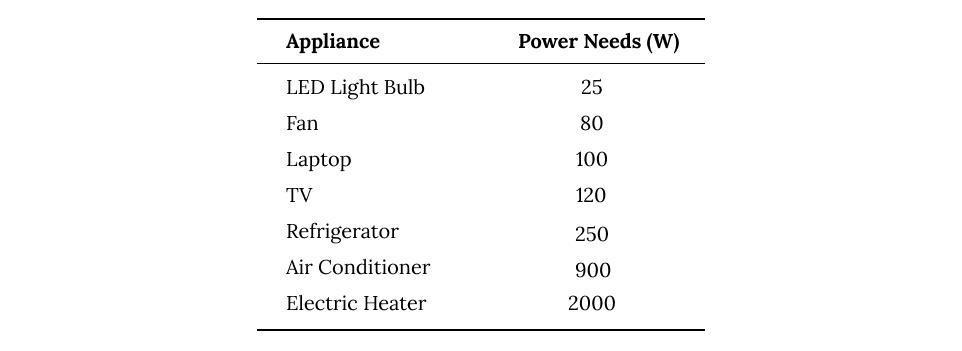
power needs of different appliances
It's also useful to quantify how much power we use over time.
1 kilowatt-hour (kWh) is the amount of energy used by consuming 1 kW of power for 1h.
If you look at the units, you'll notice that 1 kW 1h is 1 kJ / s 3600 s, so the time units cancel out, and we're left with just a unit of energy that can be expressed in joules:
Though the units are equivalent, the measurement of kWh communicates a different story than J.
3,600,000 J tells us the raw amount of energy consumed, whereas 1 kWh tells us that we have done the equivalent of consuming from a 1 kW energy source for 1 hour.
It reflects a separation between the generation and consumption of energy.
For a sense of scale, an average household uses ~30 kWh of energy per day. Meanwhile, a small power plant with a generation capacity of 100 MW will produce 2,400,000 kWh per day. This is enough energy to power 80,000 homes.
Energy Density
Energy is often carried in the form of fuel. Fuels take up space and have weight, which can impede the function of the machines that they supply energy to.
We can quantify the energy density of these fuels using a measurement of energy per unit volume or unit mass. We use J / g and kcal / g to measure energy density.
Gasoline contains ~46.4 kJ / g. By comparison, a lithium-ion battery can hold ~0.5 kJ / g. This gives you a sense for how much more energetically rich fossil fuels are.

energy density of different substances
Early Civilization
The earliest human energy need was the energy consumption required by our bodies. Our bodies need ~2,000 kcal (8.36 MJ) of energy every day.
We use this energy to:
- Heat ourselves to maintain the temperature needed for internal chemical reactions
- Fuel internal chemical reactions that maintain our function (using ATP as an intermediary)
- Fuel our brain to perform computations
- Move around and act in the world
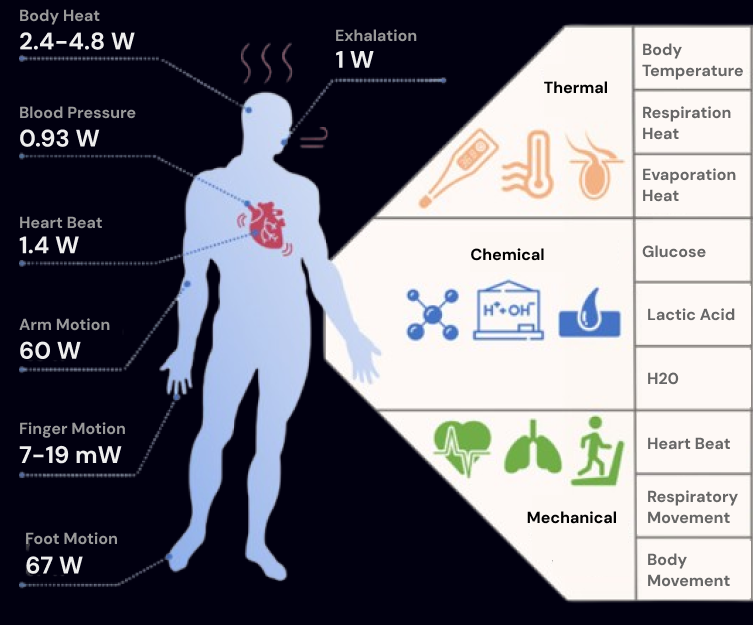
power needs of the human body
Getting this energy is a primary human necessity.
Early humans had to focus all their time on hunting and gathering to find energy because they had no consistent energy source.
The early discovery of fire broadened our energy sources by allowing us to cook foods, making them more palatable and digestible.
The invention of farming, irrigation, and animal labor gave us the first consistent and predictable energy source, which enabled the development of agrarian society.
The excess energy created by agriculture freed us to focus on things other than energy procurement. As people spent their time and energy on more varied activities, specialization and trade emerged.
We developed transportation as we learned to harness the energy from animals and the wind. This led to the expansion of trade, transitioning humanity to market based societies.
Eventually, the development of coal mining and the steam engine gave us energy dense and available enough to move large machines and trains, displacing human labor and enabling the industrial revolution.
During this time period, the discovery of electricity and the development of power plants and power lines allowed us to instantaneously transport energy. This enabled the adoption of light bulbs, refrigeration, and the eventual development of semiconductors which started the information age that has led us to modern society.
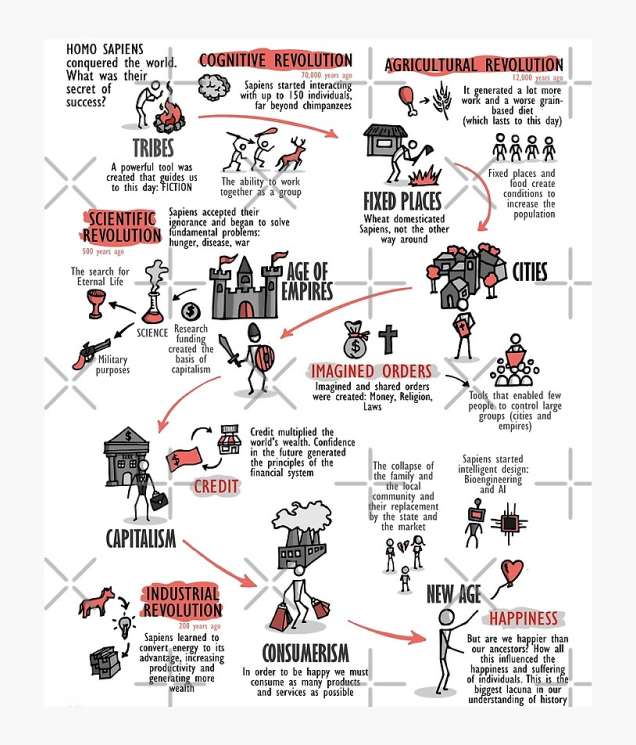
A timeline of history from Sapiens by Yuval Noah Harari. The notes on the agricultural and industrial revolutions reflect the importance of energy.[1]
Though brief, this story captures the most important shifts that have enabled the development of modern human civilization.
Each of these shifts has been the result of new technologies enabling us to use more dense and available forms of energy, allowing us to build even more technology and increase abundance.
Modern Needs
In modern society, energy is consumed by a variety of differing end uses.
But all these end uses reduce down to just 4 simple energy needs: heating, lighting, movement, and computation.
For example, industrial processes use heat to create materials, and movement to assemble them. Refrigerators use movement to pump liquid coolant around pipes, which is what keeps them cold.
All the products and systems around us work by combining the 4 primary energy uses in different ways to accomplish specific ends.
Let's look at how technology has improved our ability to fulfill each of these 4 needs over time.
Heating

Needs
Space HeatingHumans need to maintain a body temperature of ~37 °C to create the proper environment for internal chemical reactions. In cold climates, we need to heat our external environments to make this possible.
We'll see that space heating all the buildings in the world accounts for a large portion of global energy expenditure.
Water Heating
Heated water is needed for cooking to make food safer and more palatable, bathing for sanitation, and many industrial applications.
Industrial Heating
Industrial processes like smelting, refining, and chemical production all require heat to separate materials and provide the activation energy needed for chemical reactions.
The world heavily depends on the metals (like steel, aluminum, iron, copper) and other materials (plastic, fertilizer) created by these industrial processes
Smelting separates useful metals from the ores they naturally appear in. It uses heat to melt ores down and then extracts metals by combining ores with reducing agents. Metals like iron, copper, lead, zinc, and nickel are all produced with this process.
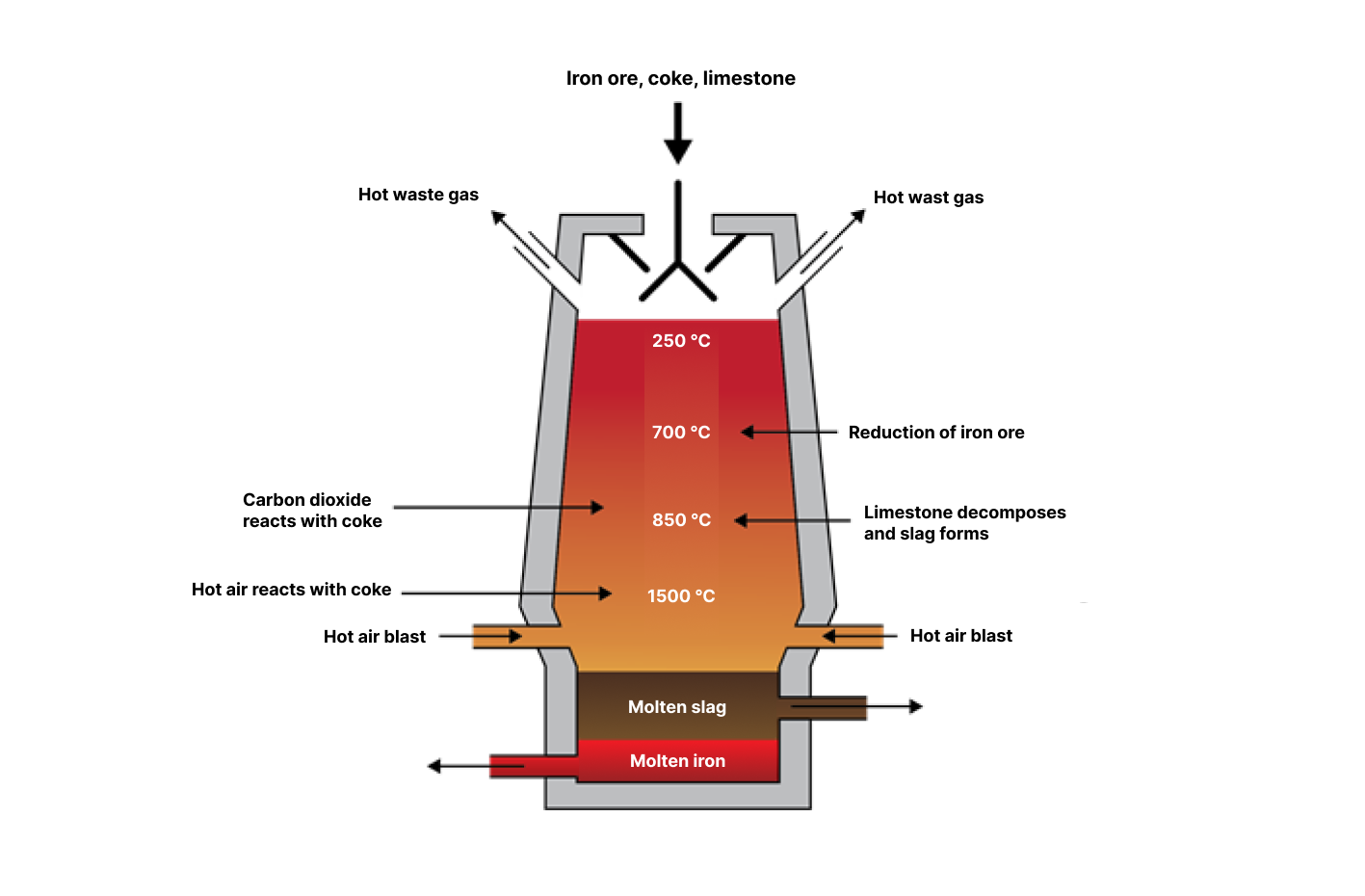
diagram of blast furnace used for smelting iron
Refining is the process of removing impurities from raw materials through processes like electrolysis and other chemical reactions. These reactions often require heat. Aluminum and petroleum are both produced through this process.
Chemicals production uses reactors that depend on high heat and pressure to facilitate chemical reactions that create cement, bulk chemicals like ammonia, and materials like plastic and nylon.
Technologies
Combustion HeatingCombustion heating generates thermal energy by burning fuels. These fuels contain substances that chemically react with oxygen, releasing energy in the reaction as heat.
Electric Heating
When electric current passes through a conductor with resistance, flowing electrons crash into atoms in the resistor, creating atomic vibrations that generate heat.
This form of heat generation is more controlled and cleaner than combustion reactions, which is ideal for heating small enclosed spaces. It’s also near 100% efficient since almost all the current in the wire gets converted to heat.
Constraints
Energy DensityHigh-temperature industrial processes require fuels with high energy density to get to their required temperatures.
For example, smelting often uses blast furnaces that exceed 1,500 °C, so these furnaces use a more energy dense form of coal called coke for fuel.
In Part III, we'll see that fossil fuels are cheap and energy dense due to their concentration of reactive hydrocarbons, making them an ideal fuel source for heat intensive applications.
Efficiency
The efficiency of heating is determined by the insulation of the heated environments. This is particularly relevant for large buildings which often have windows and gaps where heat can escape.
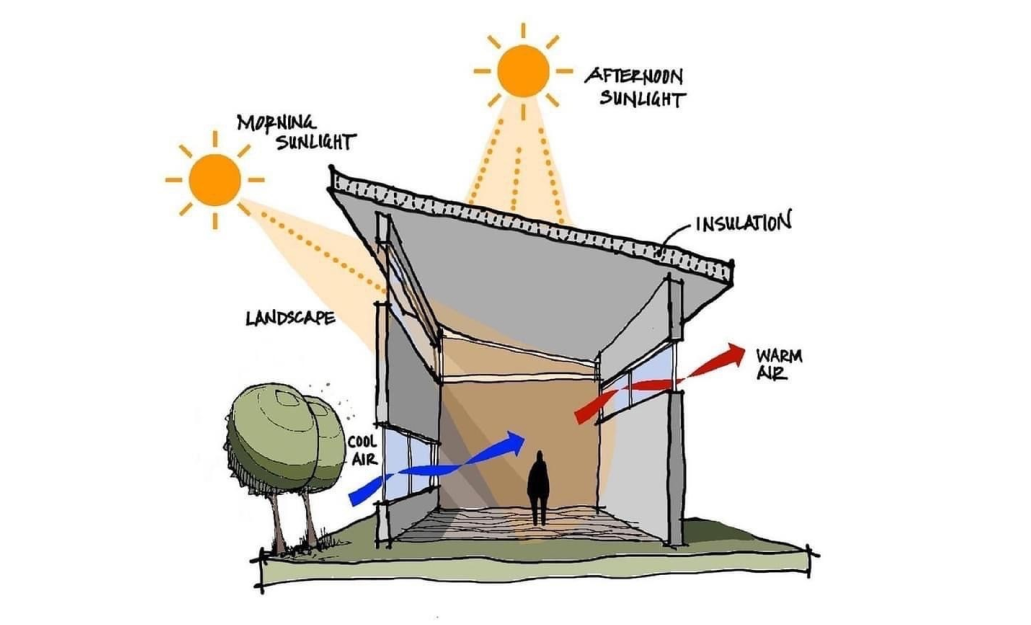
passive household heating systems can optimize insulation and solar gain[2]
The main goal of insulation is to reduce heat transfer from the inside to the outside. Better insulation improves the energy efficiency of space heating.
Air leakage can also occur through gaps in the building structure, usually around windows. This can undermine insulation efforts.
Finally, sun exposure, seasonality, and window placement determine the solar gain caused by heating from the sun, which also improves heating efficiency.
Lighting

Needs
We need light for activities to continue after sunset and in darker environments.
This increases productivity by extending working hours in commercial and industrial buildings, and increases quality of life by extending leisure hours in households.
We also need light for outdoor illumination to increase safety and prevent accidents.
Technologies
Incandescent BulbThis incandescent bulb was the first widely used light bulb, invented by Thomas Edison.
It uses a resistive tungsten filament that heats up as electric current passes through it, causing the filament to glow. This effect is known as incandescence.
This early light bulb is now obsolete due to low energy efficiency.
Fluorescent Lamp
In a fluorescent lamp, an electric current excites mercury atoms in a low-pressure mercury gas that emits UV light, which isn’t visible to us. This UV light is then absorbed by a material known as a phosphor that re-emits visible light.
These bulbs last longer than incandescent bulbs and are more energy efficient, but contain mercury which is a safety hazard. They have been replaced by LEDs in new construction.
LEDs
Light emitting diodes (LEDs) use a doped p-n junction.
This junction consists of a region with a high concentration of electrons, known as the n-doped region, and a region with a high number of holes caused by missing electrons, known as a p-doped region.
When a voltage is applied to the junction, electrons in the n-doped region combine into holes in the p-doped region, releasing energy as photons which we see as visible light.
Multiple LEDs can be combined in an array to form a lightbulb. These are the most efficient form of light we have today.
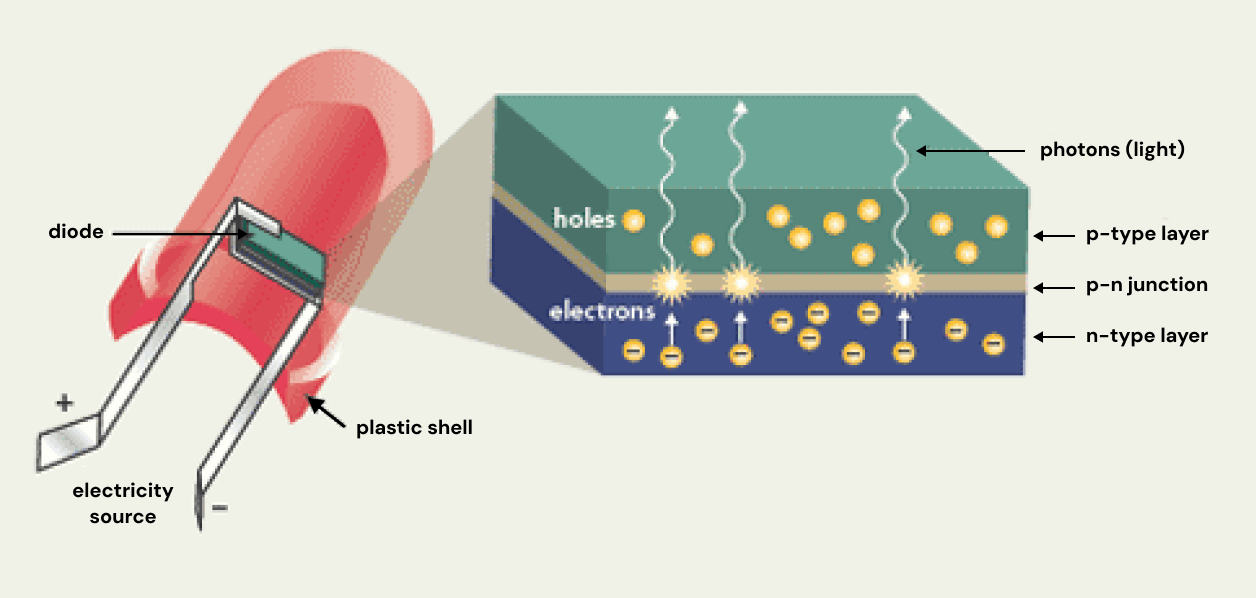
basic structure of an LED
Constraints
Luminous EfficacyLuminous efficacy is a measure of how effectively a light source converts electrical energy into light. It is measured in lumens per watt (lm/W), which measures the brightness generated by 1 watt of power.
An incandescent bulb operates ~10-17 lm/W, which represents a ~90-95% energy loss to heat. Meanwhile, a fluorescent bulb operates ~35-100 lm/W, and an LED has the highest efficiency at ~80-150 lm/W.

the luminous efficacy of different light sources[3]
Movement
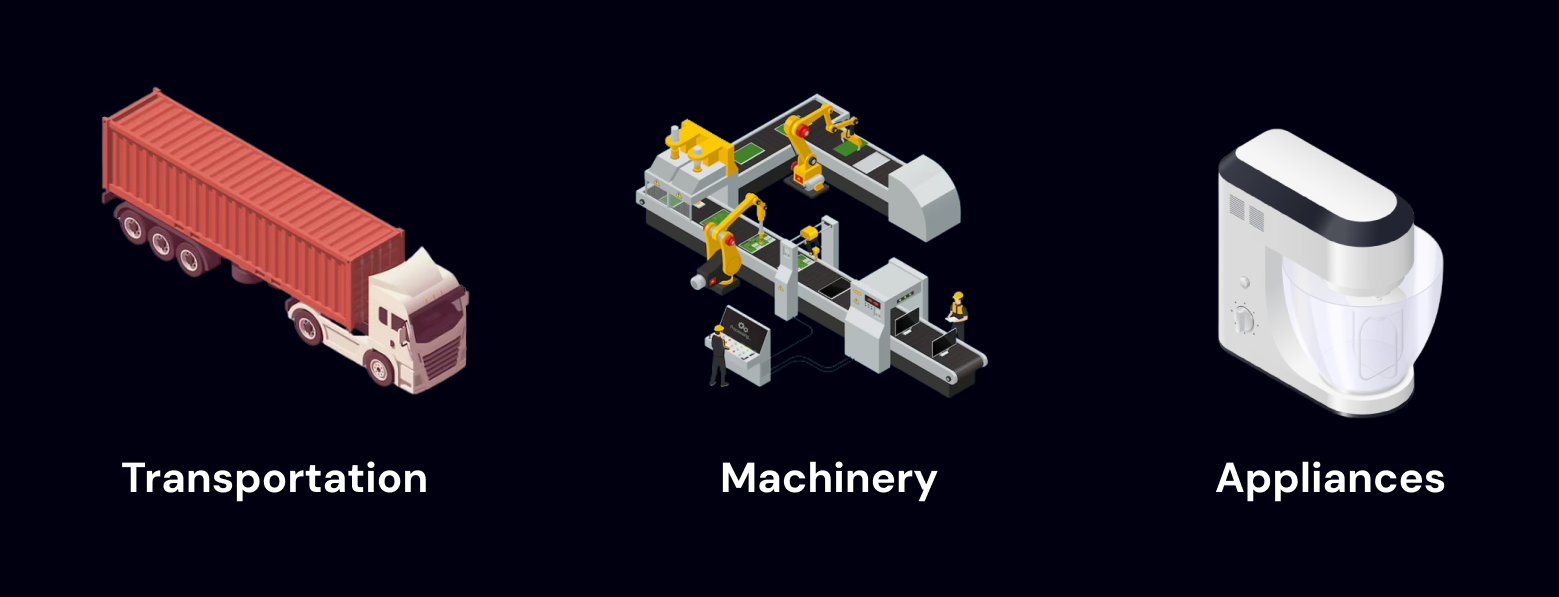
Needs
Transportation allows us to move goods (trade) and people (travel).
Machines allow us to multiply and replace the efforts of human movement, increasing productivity and enabling us to do things beyond human capabilities.
Appliances like washing machines and refrigerators provide conveniences to individuals by saving us time and effort.
Technologies
Internal Combustion EnginesInternal combustion engines (ICEs) use the high-pressure gases created by fuel and air combustion reactions to push pistons. The linear motion produced by moving pistons is then converted into rotational motion with a crank shaft.
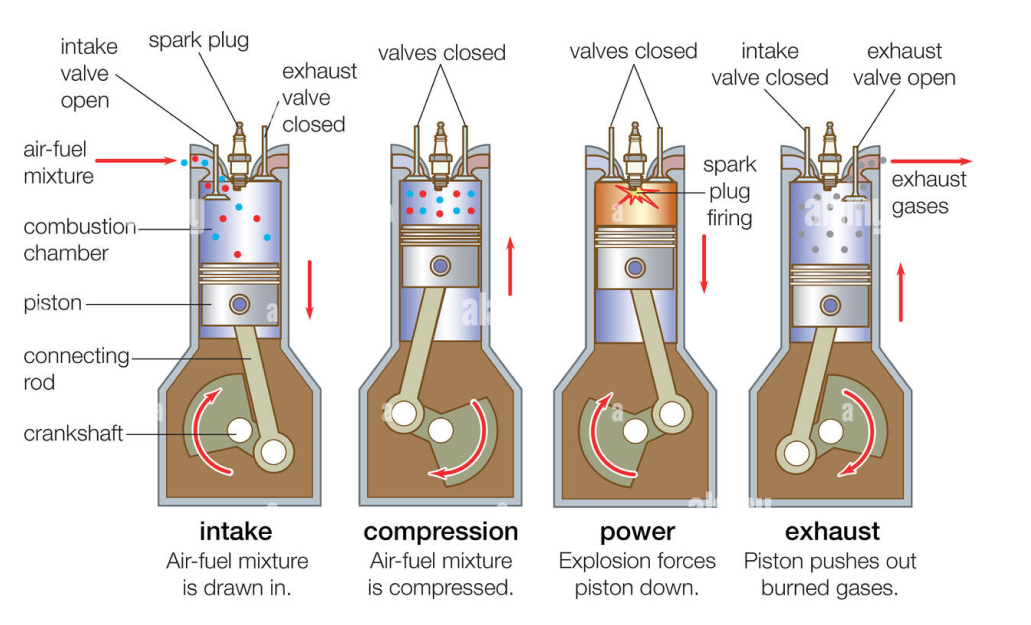
the basic flow of an internal combustion engine[4]
Modern ICEs often use liquid fuels like gasoline and diesel because of their high energy per unit weight, which is essential for transportation.
These engines typically achieve efficiencies around 20-40%, with large energy losses in the form of heat dissipated through the exhaust.
Electric Motors
In an electric motor, flowing current produces a changing magnetic field around wires. This changing magnetic field is then used to rotate stationary magnets, converting electrical energy into mechanical work.
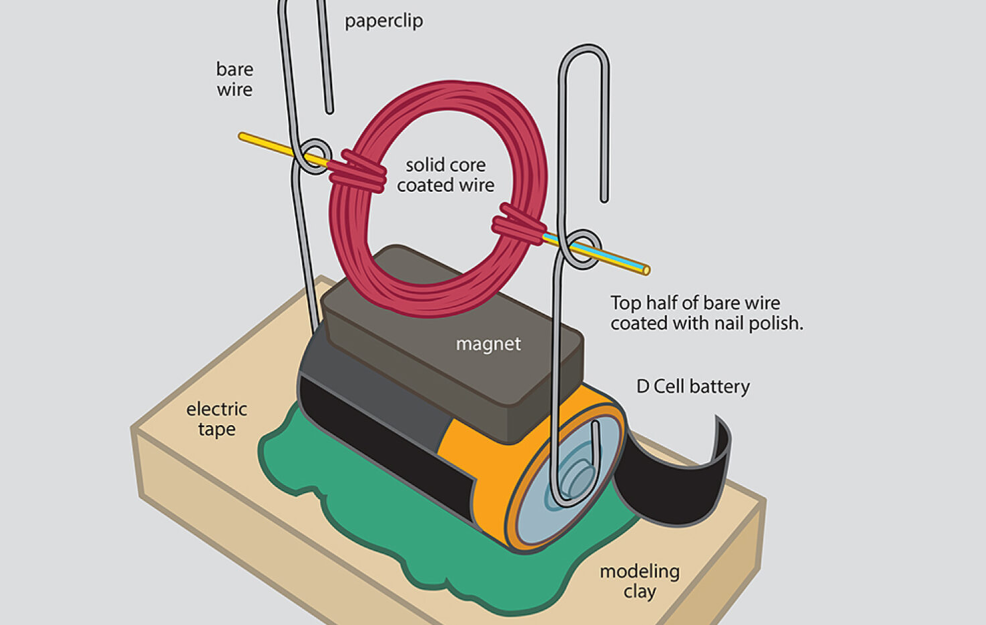
a minimal motor using household parts. with just a push, the coil will rotate until the battery discharges.[5]
These motors often exceed 90% efficiency, making them superior to combustion engines in terms of energy conversion.
They also provide instant rotational force since they don’t have to wait for the combustion of fuels, which is why electric vehicles have great acceleration.
Hydraulics & Pneumatics
Hydraulics and pneumatics use highly compressed liquids and gases to transmit forces through pressure. This is useful for powering actuators in heavy machinery and manufacturing systems.

energy exchange in a hydraulic system
Hydraulics are also essential for cooling systems like refrigerators where refrigerant liquids are circulated by pumps to allow them to pick up heat from a source and carry the heat to dissipate elsewhere.
Pumps and compressors control the flow of systems that move liquids, including our modern water infrastructure. In Part IV, we'll see that they're also essential to the function of oil and gas pipelines.
Constraints
Energy DensityVehicles have limited fuel tanks and spend part of their energy moving the fuel itself. This is why fuel weight and volume are important constraints in transportation.
Oils are the preferred fuels for transportation because they have a high energy density by volume.
Travel Distance
The energy cost of different forms of transportation depends on travel distance.
In short distance travel (cars and trucks), most energy is spent accelerating and breaking the vehicle since starting and stopping is frequent. Because of this, lightweight vehicles and especially light forms of energy are ideal.
Meanwhile, in long distance travel (trains and planes), most of the energy is spent making air flow around the vehicle, since acceleration and braking usually happens only once in the entire trip.
Efficiency
Modern engines are highly inefficient. They lose the majority of their energy to dissipated heat. As energy efficiencies increase, more energy from fuel sources gets converted into mechanical work, decreasing costs.
In contrast, the efficiency of motors makes them far more effective at converting the energy in electricity into mechanical work.
Computation
Computation is usually excluded from energy breakdowns because it currently makes up <1% of total global energy usage.
I've chosen to include this section because the recent development of digital intelligence means that our energy demands for compute may soon increase rapidly.
Needs
The needs of computation come down to the different uses of processing information.
Manipulating and storing information enables better decision-making, technological innovation, tracking & accounting, and much more. Computation and software have augmented every domain of society over the past 2 decades.
Sharing information, which is just communication, enables coordination, education, and cultural exchange.
Through the use of deep learning with large amounts of compute and data, we've now developed digital intelligence which may develop into a significant share of global energy needs.
Technologies
TransistorsWe use transistors with doped p-n junctions in integrated circuits to create devices that can perform arbitrary computations on bits. Bits can be used to represent all information.
These devices require constant electricity to physically move information around by controlling the flow of currents. This consumes energy.
The invention of the transistor and the integrated circuit were the innovations that directly enabled the modern information age.
For more context on how we've created the world of computation from transistors and integrated circuits, check out my deep dive on chips.
Fiber Optics
Fiber optics are wires made of special glasses and plastics that cause total internal reflection of light. Then, pulses of light can be sent down the wires and used to transmit data.

multiple light signals bouncing down a fiber optic cable
The global deployment of fiber optics infrastructure is what enabled the internet.
The modern internet is made up of over a million miles of fiber optics laid between continents and through oceans to connect the entire world.

the major fiber optic lines that connect the global internet
Fiber optics are highly energy efficient and are a negligible energy constraint for computation, but I mention them because of their importance to modern computation needs.
Data Centers
Data centers combine large amounts of compute and networking equipment with cooling solutions to make information processing infrastructure accessible at scale.

a map of the major data centers across the world[6]
The development of data centers brought the shift to cloud computing that enabled the explosion of software companies over the past two decades.
Data center costs are only determined by 2 factors:
- The fixed costs of construction and compute hardware, ammortized over the lifetime of the data center.
- The operating costs of the facility, dominated by the energy needs of processors and cooling.
A typical data center spends around 40% of it's total costs on energy.
In Part VII, we'll see how the development of digital intelligence depends on data centers' access to energy.
Constraints
Transistor EfficienciesThe energy consumption of compute hardware is mainly determined by the efficiency of the transistors used in the chips.
Transistors tend to increase in their energy efficiency as they decrease in size with Moore's Law. However, the rate of improvement in transistor efficiencies has slowed down over the past decade.
Cooling Requirements
Electrical components in computers generate heat due to resistance and switching activities in transistors.
This is a problem because chip components have maximum operating temperatures. Exceeding these temperatures can lead to performance hits, errors, and permanent damage.
To keep computing resources functioning smoothly, heat usually has to be dissipated using active cooling, which uses fans or pumps to increase airflow or liquid flow over components, carrying away excess heat.
Global Usage
Now let's look at our global usage of these different forms of energy to understand the needs that our energy systems have to serve.
Good energy data is scarce since it requires access to information from a variety of geopolitically opposed sources across the world.
Thankfully, the international energy agency (IEA) aggregates global energy data and releases some of it for free. Let's look at the most relevant IEA data below.
Energy Consumption
First, let's understand the scale of our global energy consumption.
The most important stat about global energy usage is that the whole world consumes ~18 TW of power.
We will constantly refer to this number in Part III to see how well different energy sources are able to meet this demand.
By Source
Let's look at how our energy usage breaks down by source.

total global energy consumption by source[7]
In 2022, our total global energy consumption was 415 million TJ. We consumed 272 million TJ of this (>65%) directly from fossil fuels.
Then, the majority of electricity production also comes from fossil fuels, which isn't represented in the chart.
In total, ~80-82% of global energy consumption in 2022 came from fossil fuels.
In the above chart, it may appear that growth in energy demands is steady. But when we zoom out, it becomes apparent that our energy consumption has grown exponentially over the past few centuries.
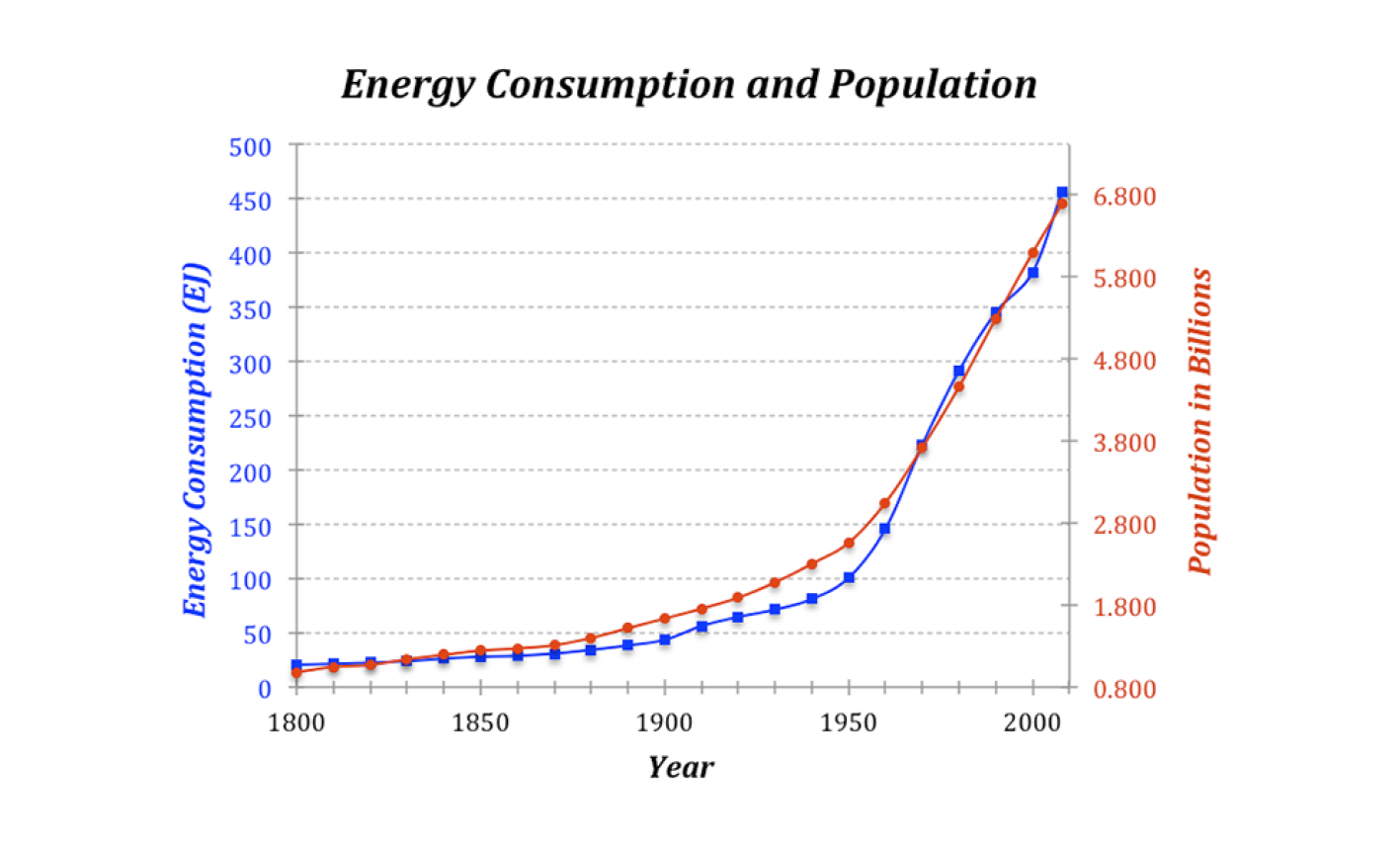
population growth and energy consumption has grown exponentially[8]
Electricity Consumption
Next, we can look at the consumption associated with just electricity.
We can see that electricity consumption in 2022 was ~27,000 TWh (~97 million TJ), accounting for <25% of global energy usage.
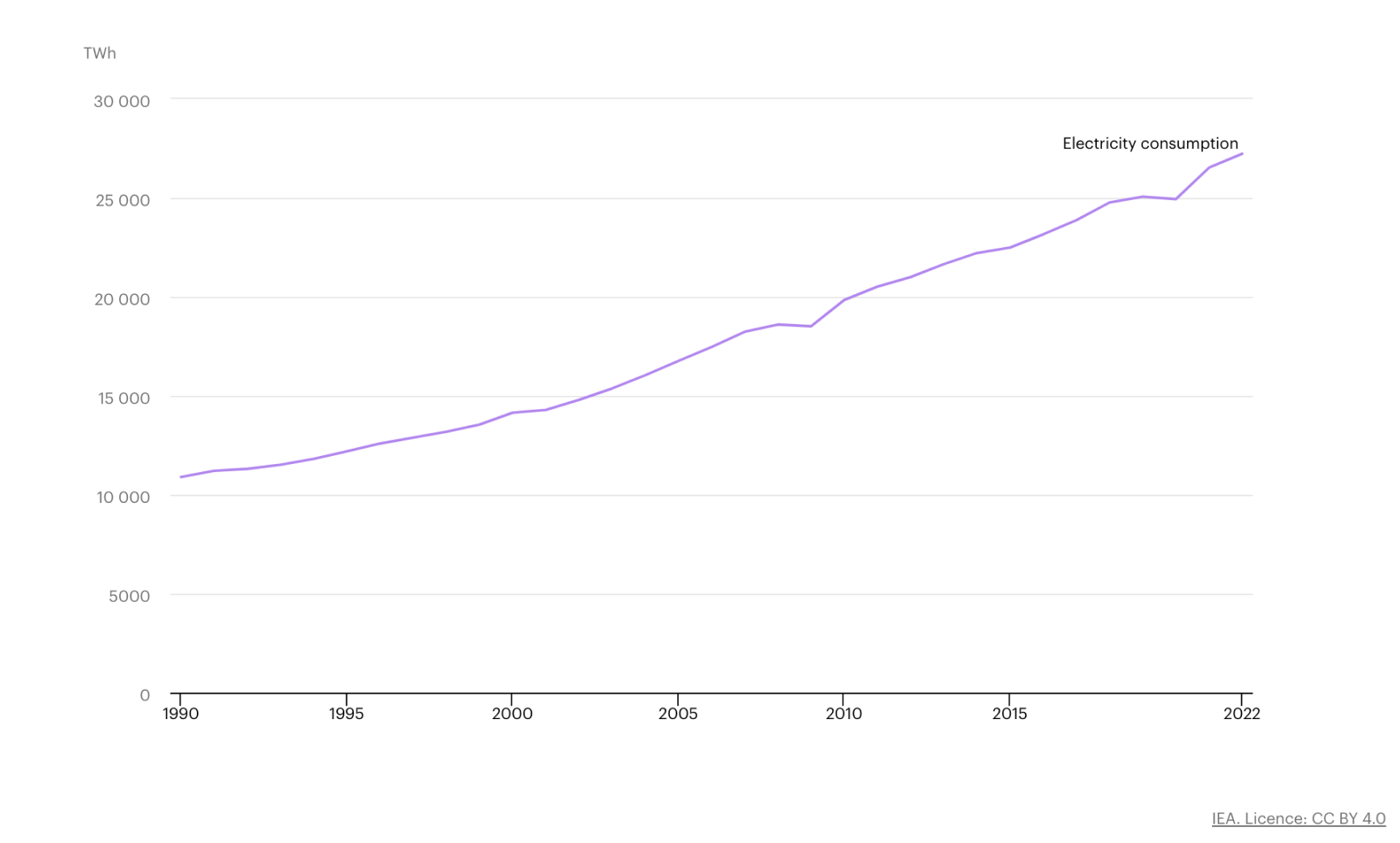
total global electricity consumption[9]
Energy Consumption by Use
Let's briefly look at the breakdown of energy sources used by different industries.
Residential
We see that the residential sector has a balanced consumption of fossil fuels and biofuels (used primarily for heating), and electricity to power appliances and lighting.
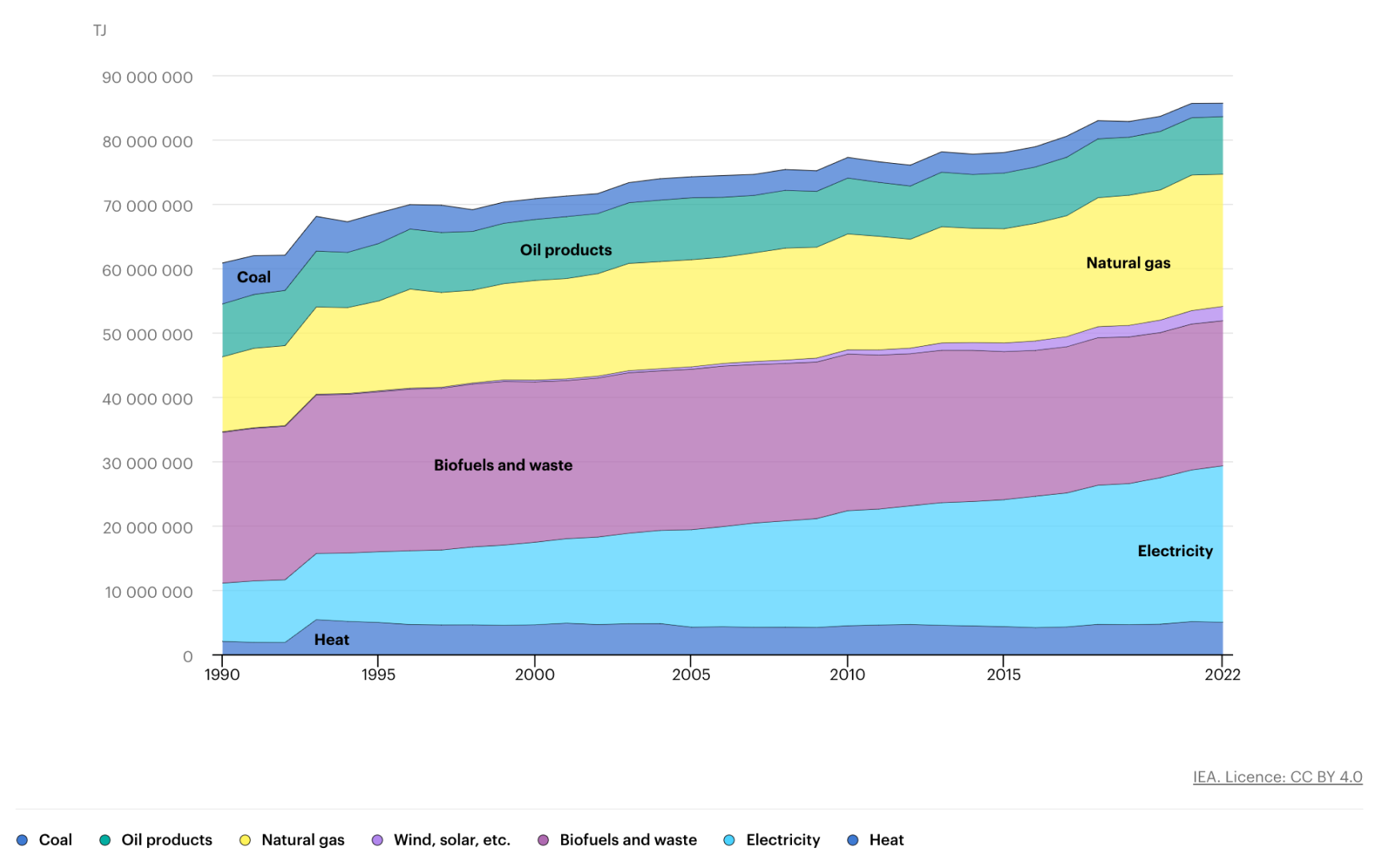
total global residential energy consumption by source[10]
We can get a further breakdown of how this energy is being spent by looking at the end-use numbers for the countries in the OECD. These countries make up <50% of global energy use, but still give us a good general sense for consumption.
We see that space heating and water heating make up the majority of residential energy use.
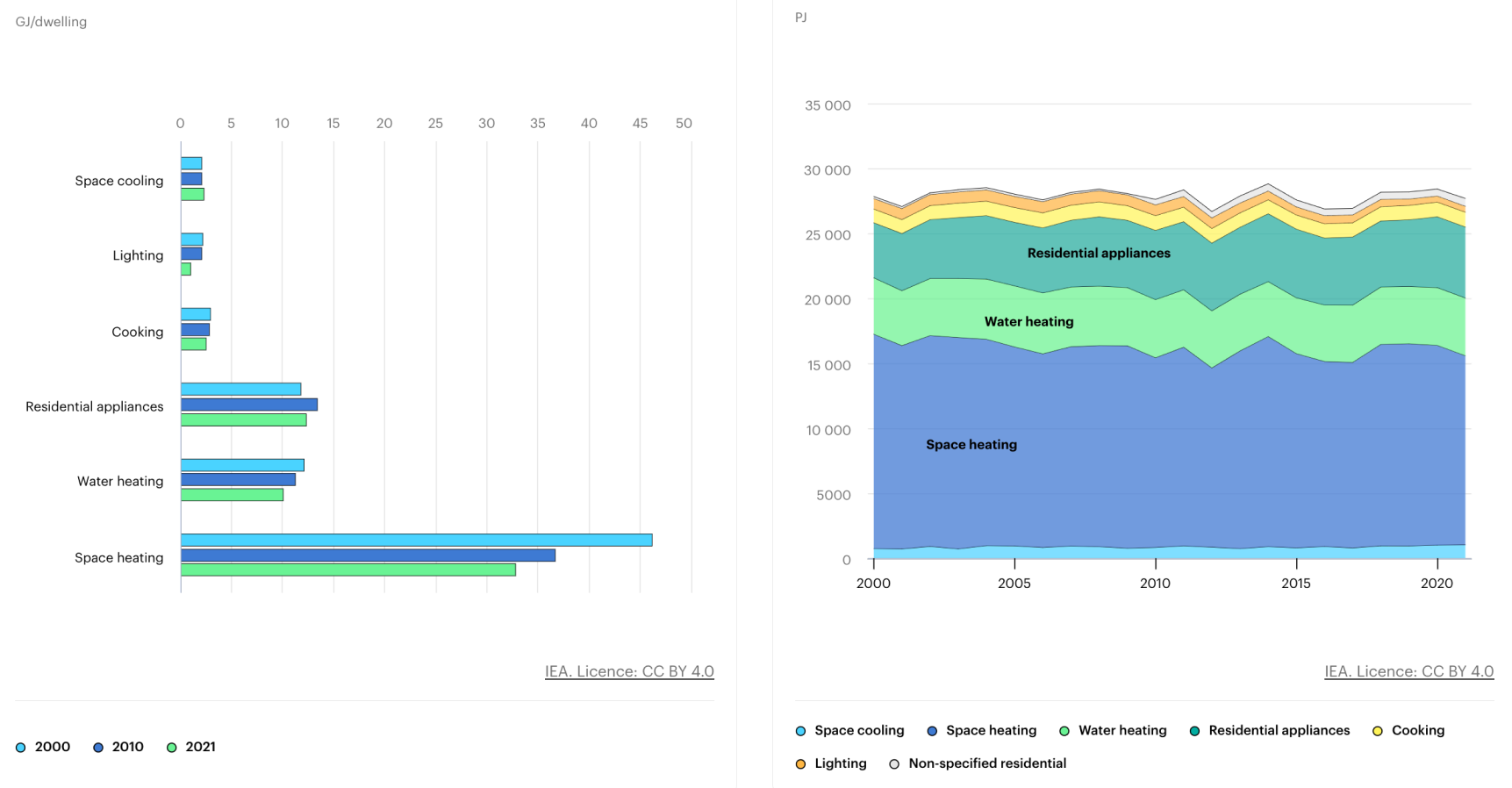
total OECD residential energy intensity by end use[11]
In 2022, >95% of energy for transportation came from oil.
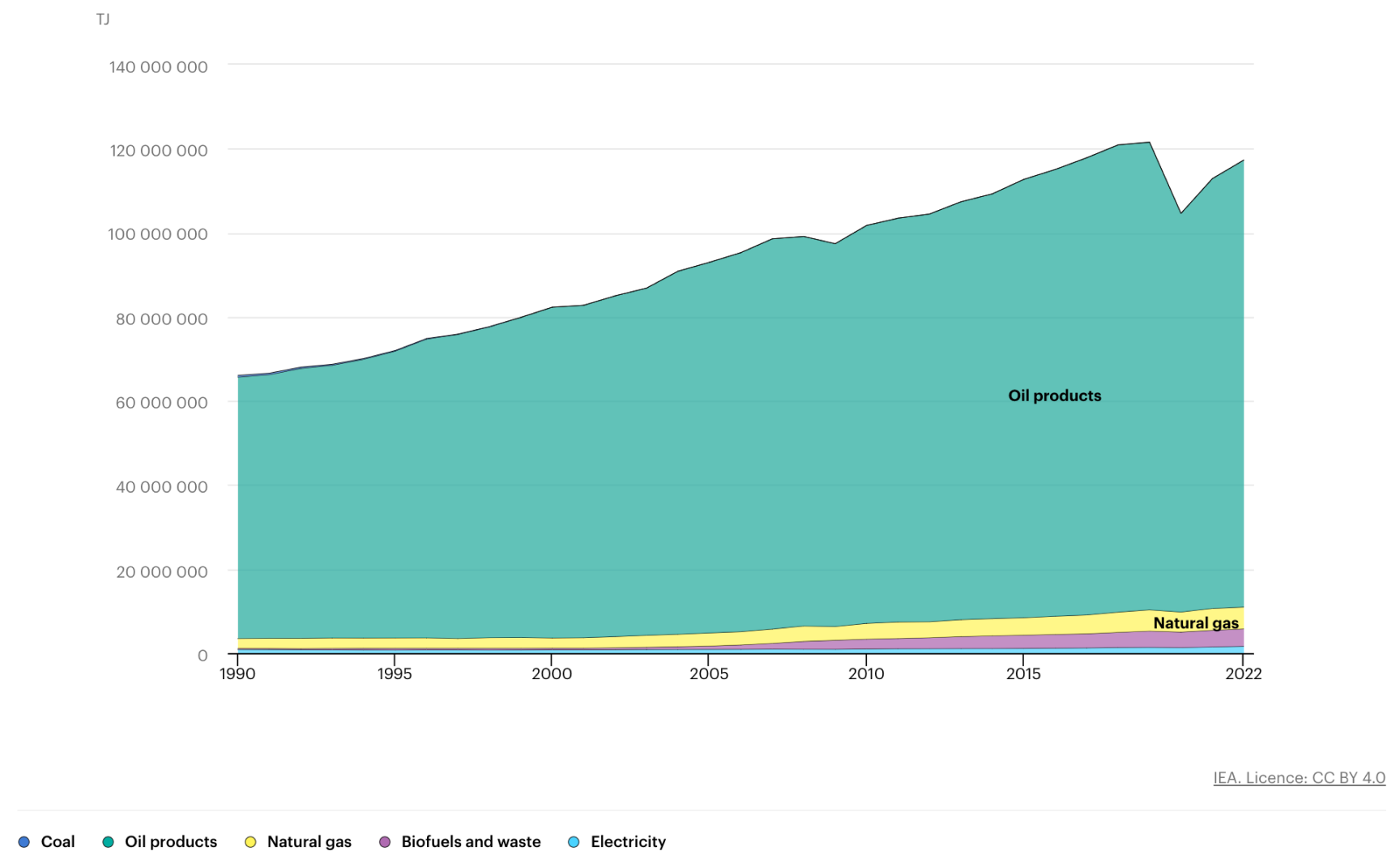
total global energy consumption for transportation by source[12]
We can see that cars and trucks make up the majority of energy expenditure. Though planes represent the highest energy needs per passenger, their lower overall usage means they account for an insignificant slice of total energy spend.
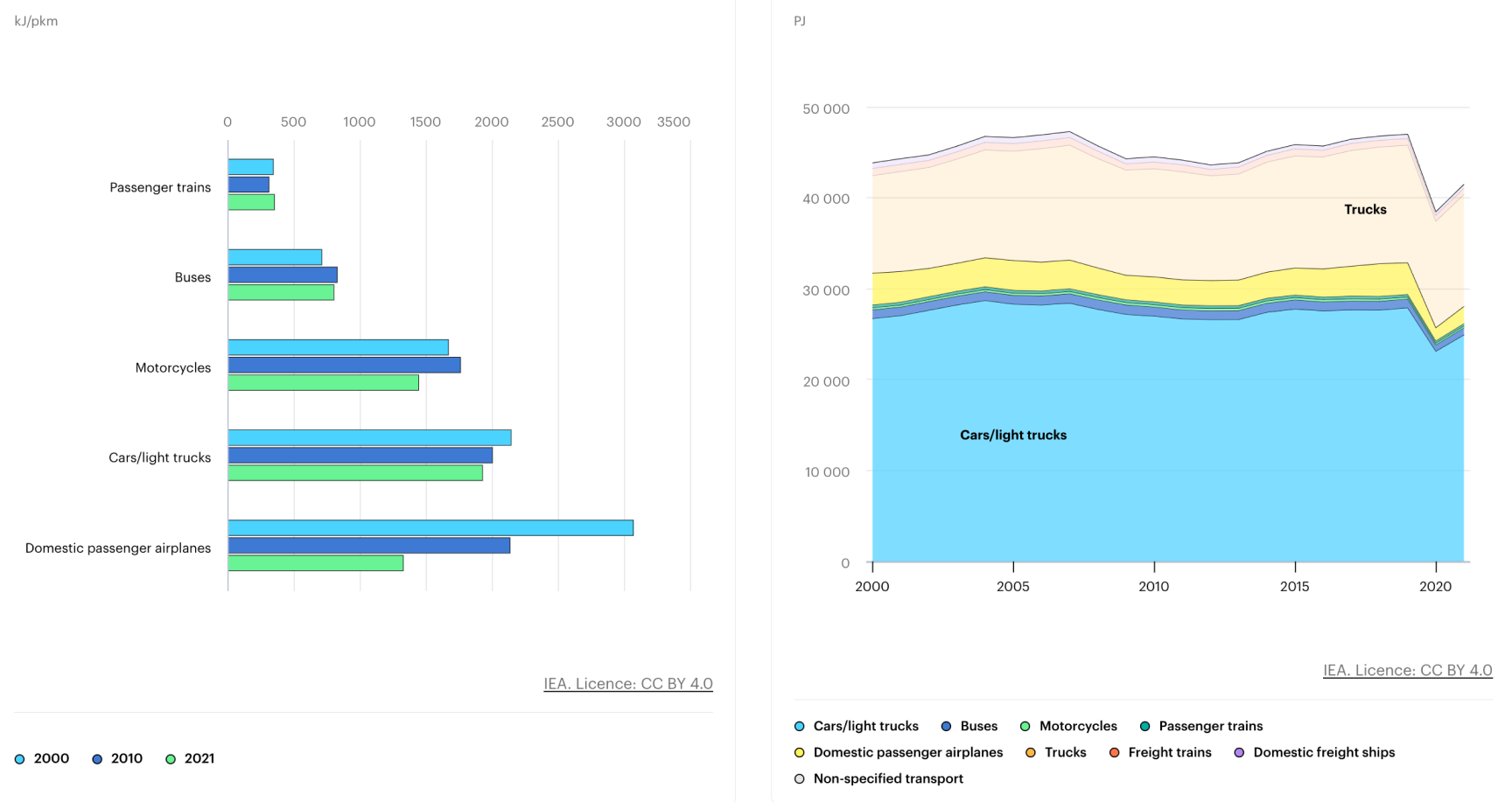
total OECD passenger transport energy intensity by end use[11]
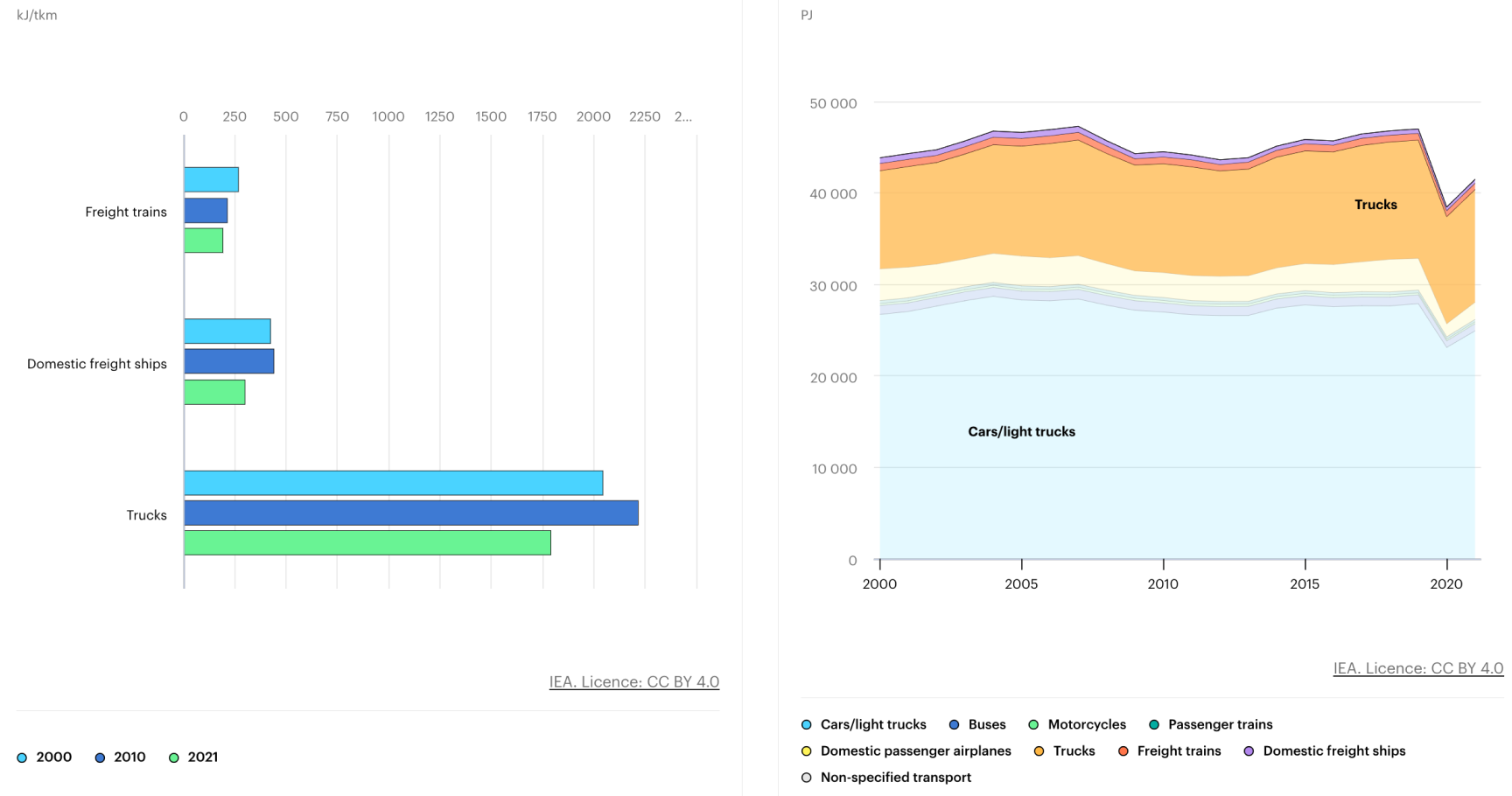
total OECD freight transport energy intensity by end use[11]
Similar to the residential sector, industry consumes energy from a variety of fossil fuels and electricity.
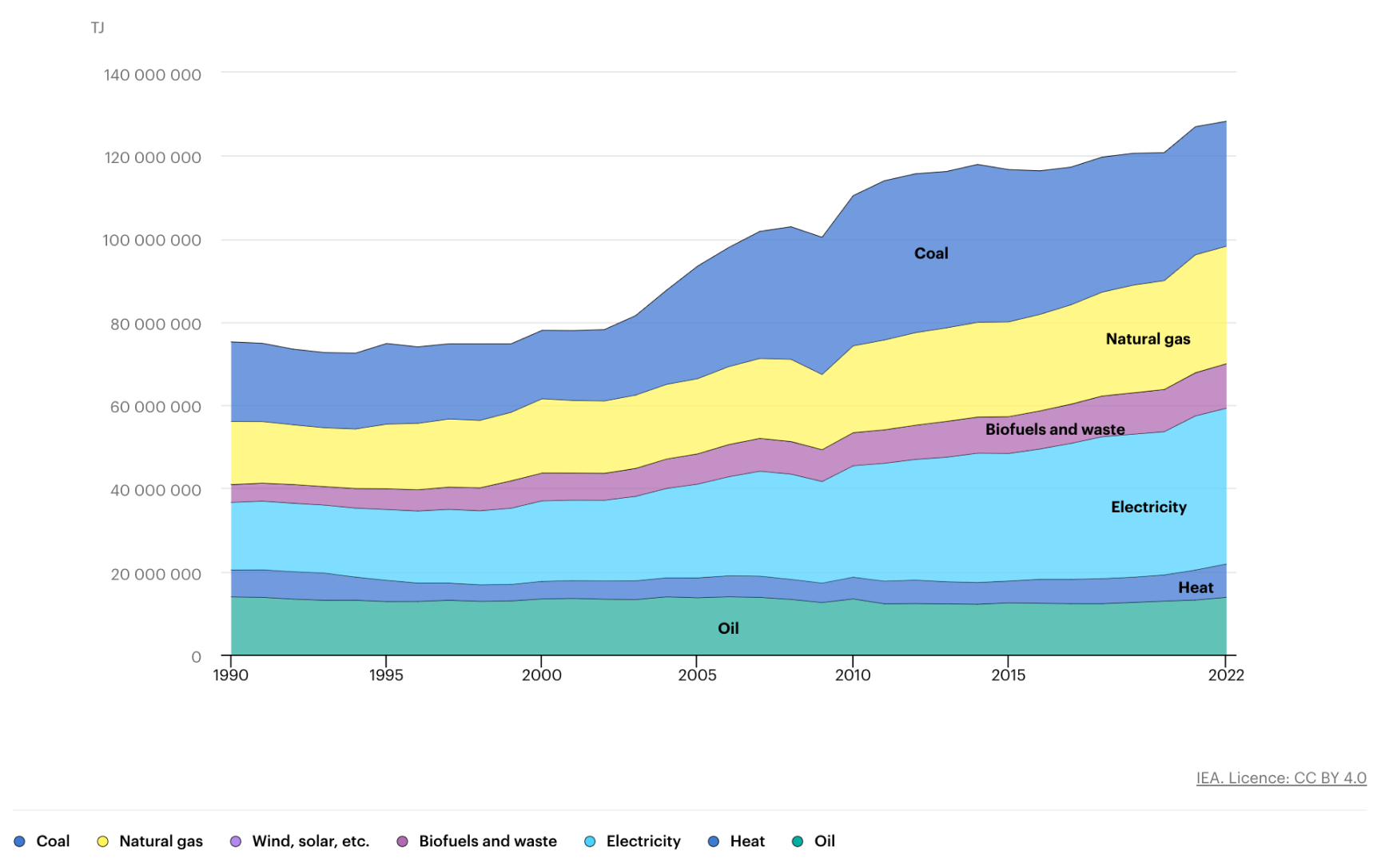
total global energy consumption for industry by source[13]
We can see that the metals, paper, chemicals, and minerals industries, all heavily dependent on energy intense industrial heating, are all big energy consumers.
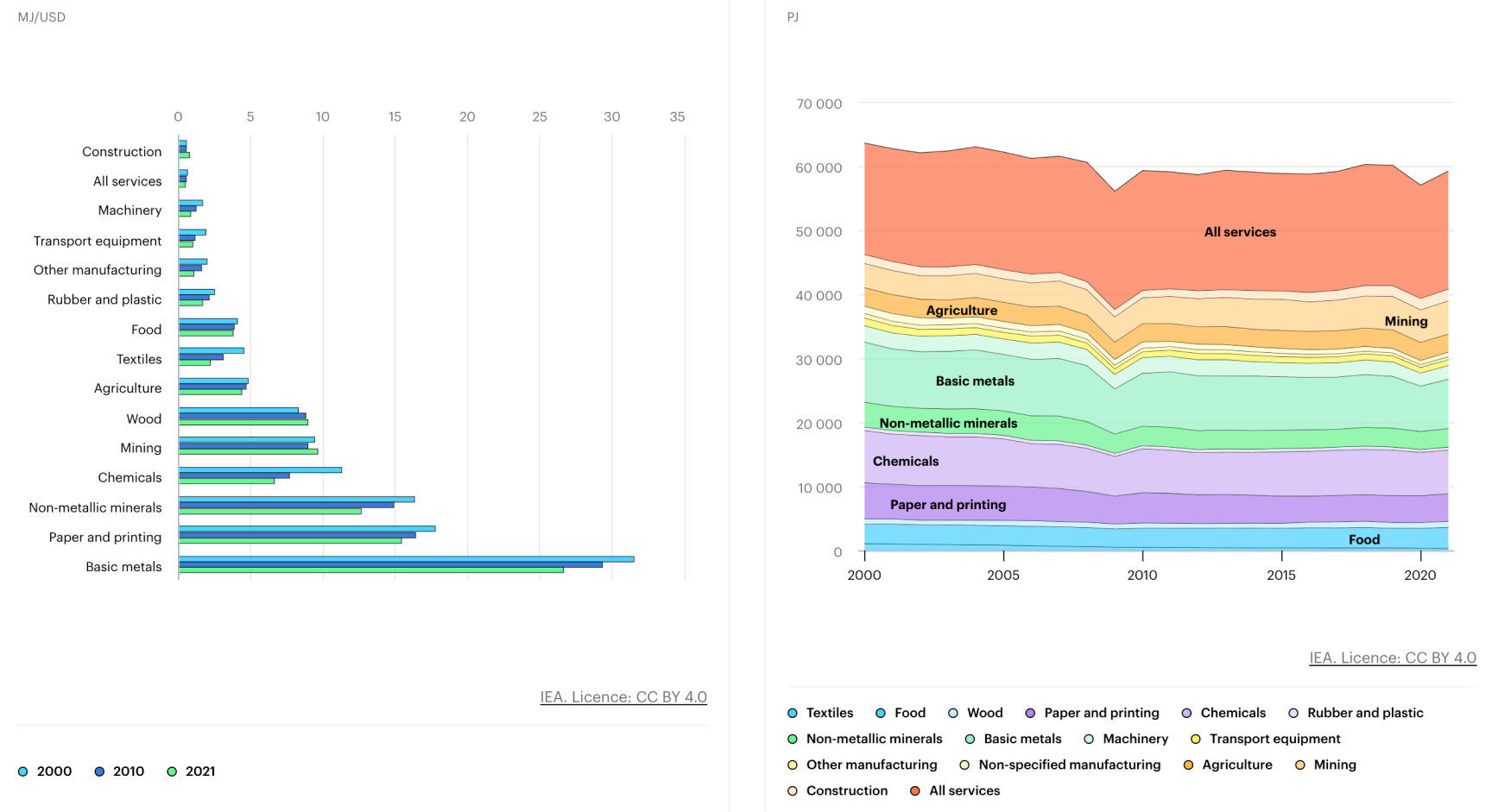
total OECD industrial energy intensity by end use[11]
Fossil Fuel Consumption
Finally, we can look at the breakdown of how specific fossil fuels are used by sector to understand the areas that most heavily rely on cheap and energy dense fuels.
Coal
We see that industry is the largest consumer of coal for it's cheap heating.

total global coal consumption by sector[14]
As expected from previous charts, we also see that transportation is by far the largest consumer of oil.
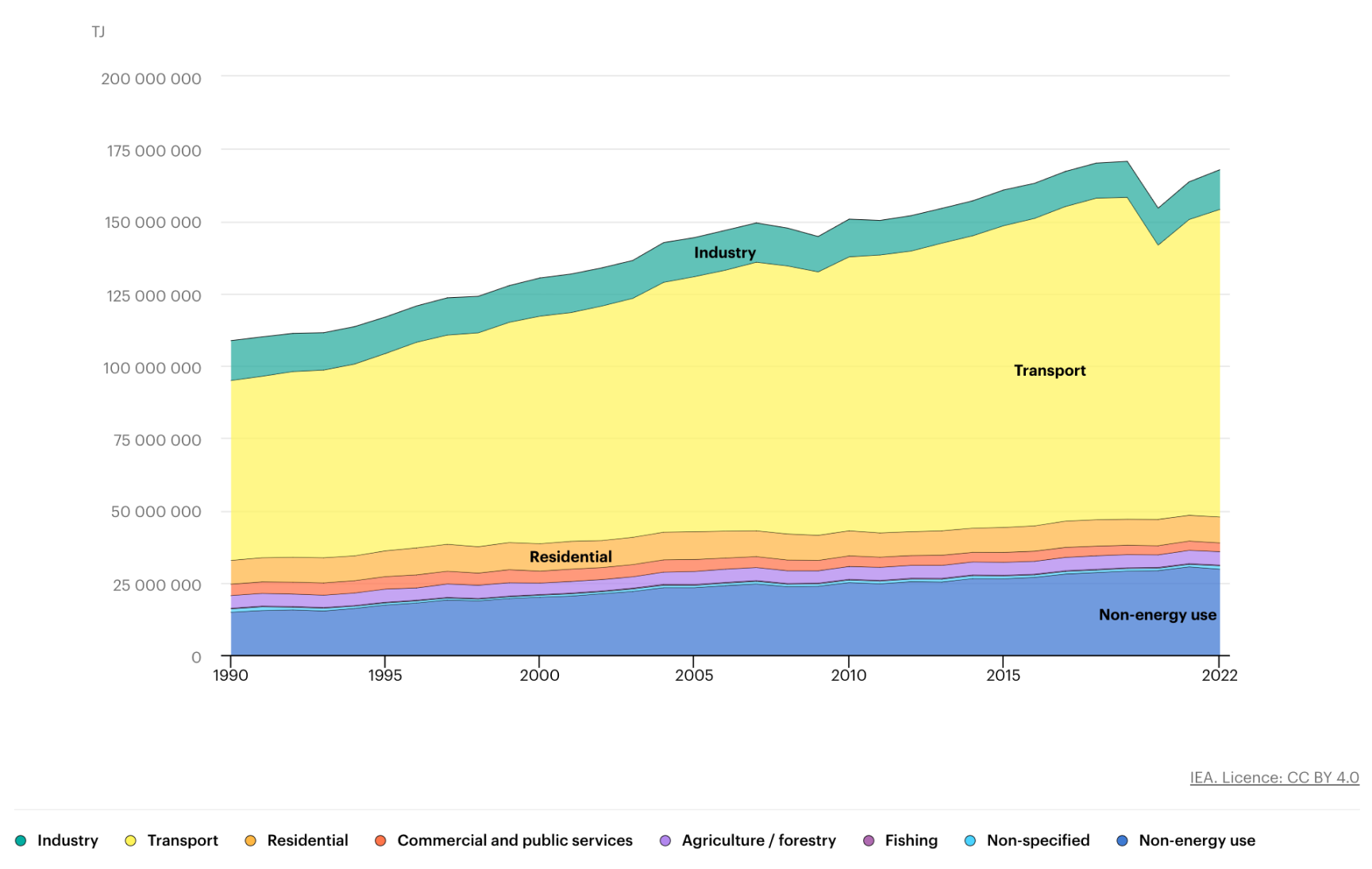
total global oil consumption by sector[15]
Meanwhile, natural gas is more diversified in usage. We'll see in Part III that natural gas is a highly flexible energy source.
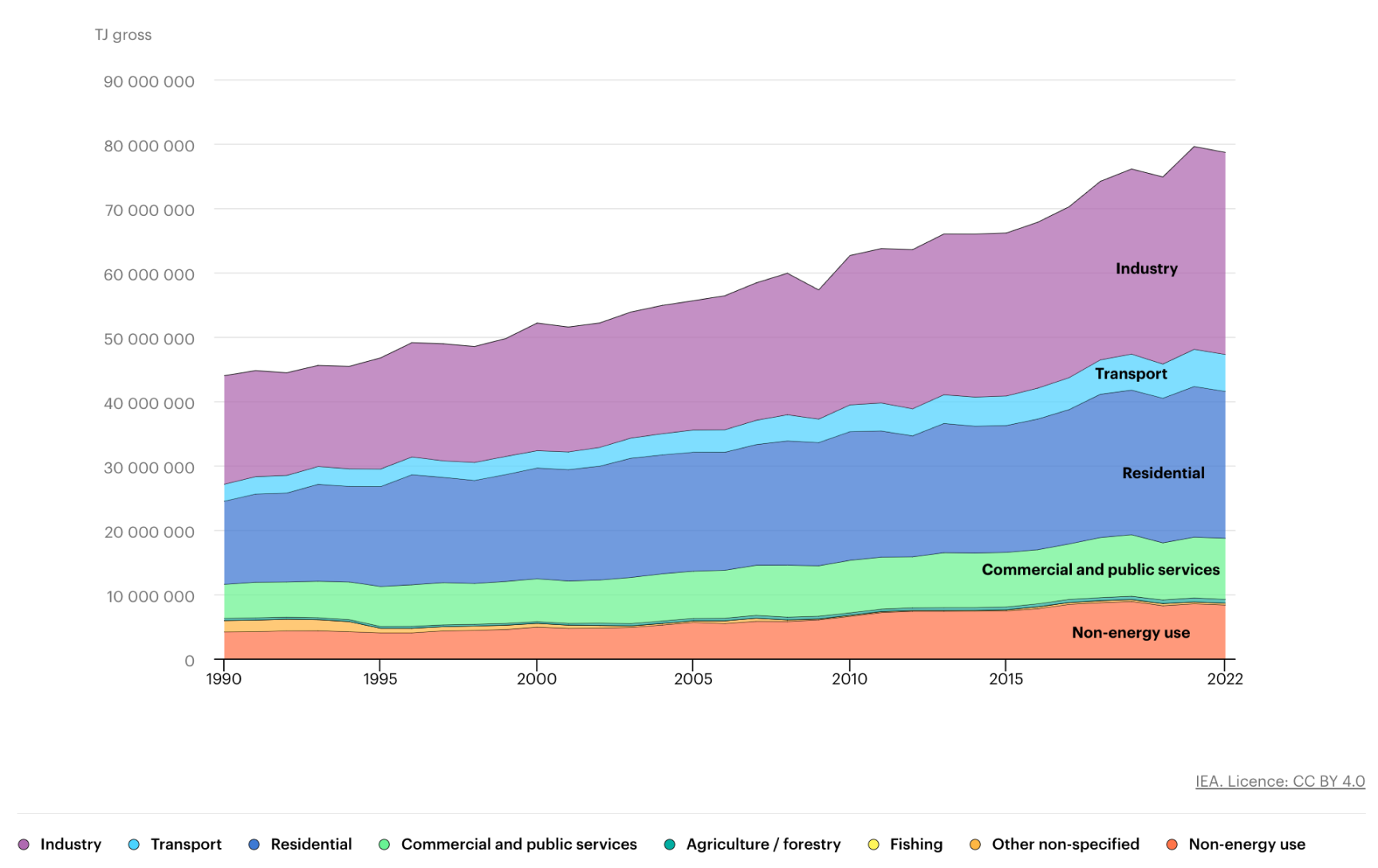
total global natural gas consumption by sector[16]
Highlights
This data paints a picture of our baseline energy needs today.
There are a few major takeaways:
- Humanity requires a total power output of ~18 TW.
- Electricity makes up <25% of global energy consumption.
- Transportation is almost entirely dependent on oil.
- Fossil fuels make up >80% of our total energy usage.
In the next section, we'll look at the systems we use to generate this energy, and we'll evaluate how these systems will have to adapt to meet our growing needs.
